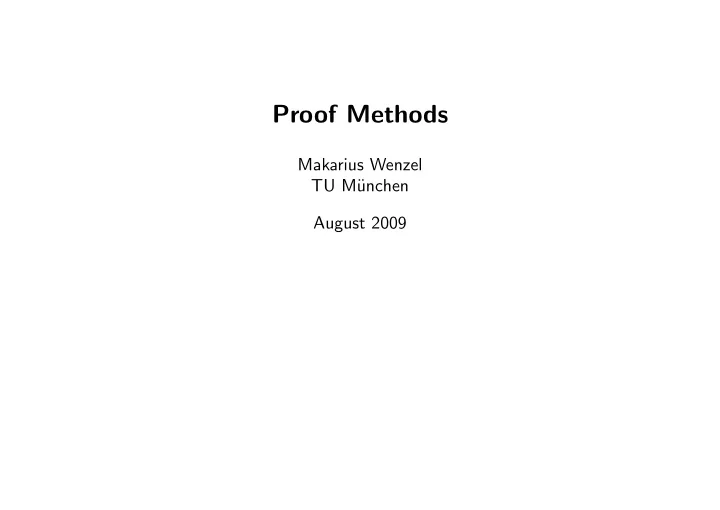

Proof Methods Makarius Wenzel TU M¨ unchen August 2009
Structured proof texts Structured proofs: from facts 1 have props using facts 2 proof ( initial-method ) body qed ( terminal-method ) Abbreviations: by m 1 m 2 ≡ proof m 1 qed m 2 .. ≡ by rule succeed . ≡ by this succeed then ≡ from this with facts ≡ from facts and this 1
Unstructured proof scripts Unstructured proofs: have props apply method 1 apply method 2 apply method 3 apply method 4 done ML tactics: have props by ( tactic my-tactic ) 2
Examples See Slides1/Ex1.thy 3
Structured proof state Isar proof state: • proof context: Proof . context • chained facts: thm list • primitive goal state: thm ⊢ subgoals = ⇒ main-goal Interactive ML access: Proof.get_goal (Toplevel.proof_of (Isar.state ())) : Proof.context * (thm list * thm) Isar.goal () : thm 4
Simple methods Common case: • Facts: inserted into goal state (emulating tactical encoding of local facts) • Goal addressing: either all goals or head goal • Plain arguments (context, additional theorems) Note: Isar methods are supposed to make progress (might require CHANGED tactical internally) See § 6.3.5 in isar-ref manual See Slides1/Ex2.thy 5
More method categories 1. structured method with cases, e.g. induct 2. structured method: strong emphasis on facts, e.g. rule 3. simple method (see above) 4. tactic emulation, e.g. rule-tac • naming convention foo-tac • numeric goal addressing • explicit references to internal goal state (invisible from text!) 6
Recommend
More recommend